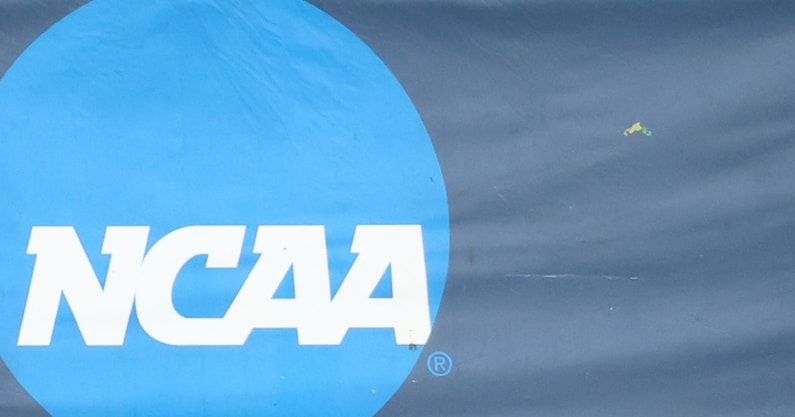NCAA panel approves measures to correct targeting rule, faking injuries

The NCAA is cracking down on some controversial rules. On Wednesday, the NCAA Playing Rules Oversight Panel approved changes that are intended to make the targeting rule more accurate, and address instances of teams appearing to fake injuries.
“The NCAA Playing Rules Oversight Panel on Wednesday approved football measures intended to strengthen the accuracy of the targeting rule, limit blocking below the waist and address teams that appear to fake injuries to gain an advantage,” wrote the NCAA. “All these rules changes will take effect in the 2022 season.”
First, the NCAA will enact an appeal process for games where a targeting foul occurs in the second half of a game.
“In games that have instant replay, when a targeting foul occurs in the second half, the carryover penalty (of sitting out the first half of that player’s next game) will be eligible for further appeal,” wrote the NCAA. “The process will begin with a conference submitting a request to the NCAA national coordinator of officials, who would review video of the play.
“If it is obvious that a player was incorrectly penalized for targeting, the call would be overturned, and the player would be cleared to play in the first half of the next game.”
Fans have been clamoring for new targeting rules due to some tough calls over recent seasons, but Ross Dellenger of Sports Illustrated tweeted that hopes shouldn’t go up too high.
“Re the new targeting appeals process: Last year, there were 99 targeting fouls in the second half of FBS games (eligible for appeals). Steve Shaw (National Coordinator of Officials) told @SINow last week that *less than five of them* would have been overturned on appeal,” tweeted Dellenger.
Top 10
- 1New
Marshall Faulk
Deion Sanders adds HOFer to staff
- 2
Greg Sankey
2024 salary revealed
- 3
Mike Woodson
Considering retirement amid IU struggles
- 4
NBA Mock Draft
Projecting 1st round after trade deadline
- 5
Attorneys fire back
Brian Kelly comments draw ire
Get the On3 Top 10 to your inbox every morning
By clicking "Subscribe to Newsletter", I agree to On3's Privacy Notice, Terms, and use of my personal information described therein.
Continuing, the NCAA also will enact a reporting and investigation process for teams believed to be faking injuries in 2022.
“To address teams that are awarded an injury timeout through deceptive actions, panel members approved a reporting and investigation process,” wrote the NCAA. “Schools and conferences will be able to report questionable scenarios to the national coordinator of officials, who will review and provide feedback to the conference for further action. Any penalties levied would be up to the conference office or school involved.”
According to the NCAA, the NCAA Football Rules Committee weighed “several in-game options” to address the issue, including forcing an injured player to miss more than one play. However, they came to the conclusion that the possibility of players staying on the field hurt to avoid missing more than one play was too big of a risk to enact.
“We considered all options to address this issue, including allowing both teams an opportunity to substitute after a first down,” said David Shaw, chair of the Football Rules Committee and coach at Stanford, discussing how the pace of play appears to be contributing to this concern, via the NCAA. “This is another step to consider in the future.”
In addition to the rule changes regarding targeting and faking injuries, the NCAA also addressed rules governing blocking below the waist, defensive holding and declaring a runner down when they begin to simulate a feet-first slide. The latter came into play last season, when Pittsburgh quarterback Kenny Pickett controversially fake-slid on his way to a momentum-shifting touchdown run.